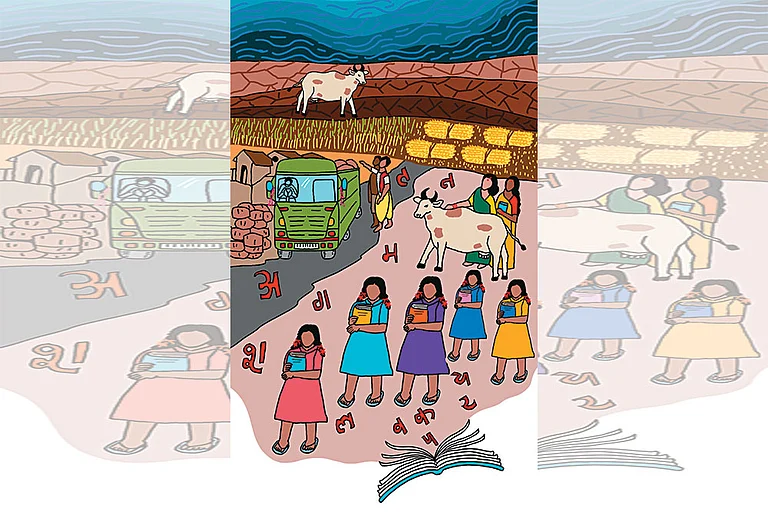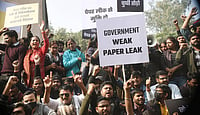
Consolidating the gains it had made in the last assembly elections in 2020, AIMIM has won in five seats.
In at least three seats in Seemanchal, it has cut into the vote bank of the INDIA bloc, which it had offered to be a part of in the run-up to the elections.
AIMIM has won in Amour, Bahadurganj, Kochadhaman, Jokihat, and Baisi.
Ahead of the Bihar elections, All India Majlis-e-Ittehad-ul-Muslimeen (AIMIM) chief Asaduddin Owaisi, during a media interaction, said: “When we contest the elections in Seemanchal with full force, no one should say, ‘Mummy, Mummy, they snatched chocolates from us’.” He was indicating that his party would perform well in Seemanchal and his direct reference was to Tejashwi Yadav.
A couple of months ago, in the run-up to the elections, the AIMIM was looking to join the Mahagathbandhan. The party was in a position to bargain for six seats after pulling a stunner in the 2020 Assembly elections by winning a surprise five seats in Seemanchal, which led to the BJP-led NDA having an upper hand in the region and the state.
Akhtarul Iman, AIMIM’s Bihar chief, wrote letters to the Rashtriya Janata Dal (RJD) requesting inclusion in the alliance.
“Give us just six seats. We had won five of them earlier. Even if you (INDIA bloc) come to power, don’t make us ministers—just set up a Seemanchal Development Council. We too don’t want the BJP to come to power. We’ve fulfilled our duty; now it’s up to the people of Seemanchal to decide who wants to help the BJP succeed and who wants to stop it. We’ve done our part. Whatever decision the RJD takes, we’re ready. But no one should call us the BJP’s B-team again,” Owaisi said at one of the meetings.
The moot question being raised in the political arena then was—why the AIMIM, despite having contested 20 seats against both the Mahagathbandhan and the NDA in 2020—was pleading repeatedly to be included in the Mahagathbandhan? The party’s argument then was it did not want to hand Bihar over to the BJP. “If they (Mahagathbandhan) don’t give us seats, fine. We will continue to try until the very end to be part of the alliance. Our goal is to stop the BJP, not to satisfy egos,” AIMIM’s national spokesperson Adil Hasan had then said.
The RJD, however, snubbed AIMIM badly and the party decided to go solo.
In 2020, the party contested 19 seats, winning five. This election, AIMIM announced 25 candidates, including two non-Muslim candidates, focusing on the Seemanchal region. AIMIM’s decision to field two non-Muslim candidates—Rana Ranjit Singh from Dhaka and Manoj Kumar Das from Sikandra —underscores Owaisi’s long-term strategy to reposition the party as a social justice-oriented, multi-community platform not confined to Muslim-majority constituencies.
Consolidating the gains it had made in the last assembly elections in 2020, AIMIM has won in four seats and is leading by a big margin in one of the 25 seats (at 6.15 PM) it contested in Bihar. All five seats are in the Muslim-dominated Seemanchal region. Further, in at least three seats in Seemanchal, it has cut into the vote bank of the INDIA bloc, which it had offered to be a part of in the run-up to the elections.
While the Mahagathbandhan is leading in only three seats in Seemanchal (two Congress, one RJD), the NDA has swept the region. Of the 24 Assembly seats in Seemanchal, BJP is leading in eight, JD(U) is leading in five and the LJP is leading in three seats, respectively, as of 6:15 PM.
Seemanchal—with its 24 seats and around 10 per cent of the 243-member Bihar assembly—was in the spotlight this election. The reason being that the northeastern region of Bihar, comprising four districts—Purnea, Araria, Katihar and Kishanganj—has a history of giving a fractured mandate and swinging one way or another since 2005. In this election, the region bordering Nepal and Bangladesh through West Bengal, having a big chunk of the state’s 17 per cent Muslim population, was a ballot battle to watch out for.
Seemanchal’s four districts have been seen to hold up Muslim support for the Congress and the Rashtriya Janata Dal’s (RJD) famed Muslim-Yadav (M-Y) formula—until they didn’t. In 2020, AIMIM grabbed five seats, contributing to the BJP-led NDA’s upper hand in the region and the state. The NDA—comprising the BJP and Nitish Kumar’s Janata Dal United JD(U) and others—won 12 seats; the then Mahagathbandhan, including the Congress and the RJD, clinched seven.
There are a couple of factors why political parties are going out of their way to woo voters in the Seemanchal region. The major factor is the Muslim population. Though Bihar has 17.7 per cent of Muslims in its 13.07 crore population—as per the 2023 caste-based survey—the Seemanchal districts buck the trend with a much larger share of their population. Purnea has over 40 per cent of Muslims, Araria 43 per cent, Katihar 45 per cent and Kishanganj has 68 per cent. A sizeable presence of Yadavs and the Extremely Backward Castes (EBCs) also influences the political mathematics of the region.
The other major factor is poverty and the lack of development. The Seemanchal districts are ranked among the poorest not only in the state but also in the country. As per the National Family Health Survey-V (NFHS-V), conducted in 2019-21, the incidence of multi-dimensional poverty ranged between 44 and 52 per cent of the population in the four districts.
This election, four players were vying with each other for a bigger share of the Seemanchal pie and pulling out all stops for it—the NDA, the INDIA bloc, the AIMIM (that has formed a third-front alliance with Chandrashekhar Azad’s Azad Samaj Party and Swami Prasad Maurya’s Apni Janata Party), as well as Prashant Kishor’s Jan Suraaj Party (JSP).
As of now, it looks like the NDA, thanks to the AIMIM has an edge.



























